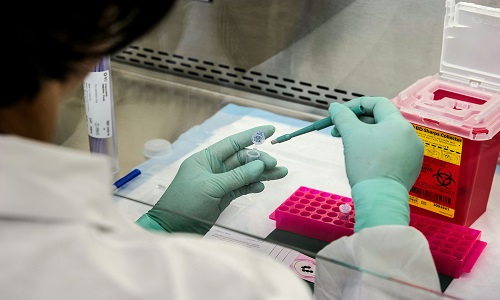New Tools can Help Identify Carbohydrate Binding Proteins
New Tools can Help Identify Carbohydrate Binding Proteins
Full Description
A major hurdle that carbohydrate researchers have been trying to overcome is the limited tools available to decipher the effects of sugar. As a workaround, most researchers use lectins (sugar-binding proteins) isolated from plants or fungi, but they are large, weakly bound, and limited in specificity and the range of sugars detected. The article was published in ACS Chemical Biology. Researchers in Professor Barbara Imperiali’s team developed a platform to address this deficiency.
“The challenge with carbohydrate polymers is that their biosynthesis is not template-driven,” says Imperiali, senior author of the study and professor in the Department of Chemistry and Biology. “Technological advances in proteins and nucleic acids have driven the development of biology, medicine and biotechnology. The carbohydrate field is seriously lagging behind and tools are desperately being sought.”
Biosynthesizing carbohydrates requires a specific enzyme to synthesize every link between individual sugar molecules, and there are currently no existing methods for deciphering the structure and sequence of complex carbohydrates. Antibodies to carbohydrates can be generated, but doing so is challenging, expensive, and produces much larger molecules than research really requires. An ideal resource for this mechanistically limited field would be the discovery of size-limited binding proteins that can use these binders to recognize small pieces of carbohydrates and piece them together into a structure, or to detect and recognize complex methods for specific carbohydrates in structures.
The authors of this study used directed evolution and a clever screening design to identify carbohydrate-binding proteins from proteins that lack carbohydrate-binding capacity at all. Their findings provide the basis for identifying carbohydrate-binding proteins with diverse and programmable specificities.
This advance will enable researchers to track user-defined sugar targets without restriction by lectin action, or without challenges in the ability to produce antibodies. These results could inspire future collaboration with the engineering community to maximize the efficiency of yeast surface display pipelines for glycobiology. In fact, this pipeline works well for proteins, but sugar is a more difficult target and requires modification of the pipeline.
In terms of future applications, the potential of this innovation ranges from diagnosis to long-term treatment and paves the way for collaboration with MIT and other researchers. For example, a team of chemistry professor Laura Kiessling studied Mycobacterium tuberculosis (Mtb), which has an unusual cell wall composition and has unique sugars. Using this approach, adhesives can potentially develop to specific functions on Mtb. Hadley Sikes, a professor of chemical engineering, developed paper-based diagnostic tools in which binding partners for specific epitopes or markers were identified and used this finding to develop lateral flow detection devices in the long run.
In cancer, certain sugars are overrepresented on the cell surface, so theoretically, researchers can use this finding, which also applies to labeling to develop a tool for detection from evolved glycan binders.
This finding also makes a significant contribution to improving cellular imaging. Researchers can modify the adhesive with fluorophores using a simple attachment strategy and then select the best fluorophore for tissue or cell imaging. For example, the Kiessling group could use fluorophore labeled small protein adhesives to detect bacterial sugars, thereby initiating fluorescence-activated cell sorting to probe complex microbial mixtures. This in turn can be used to determine how the patient’s microbiota is disturbed. It is also possible to screen the patient’s oral cavity or its upper or lower gastrointestinal tract for microbiota to read out imbalances within the community using these types of reagents. In the more distant future, this binder may have therapeutic purposes, such as removing specific bacteria from the gastrointestinal tract or oral cavity based on sugars shown by bacteria.
Category



